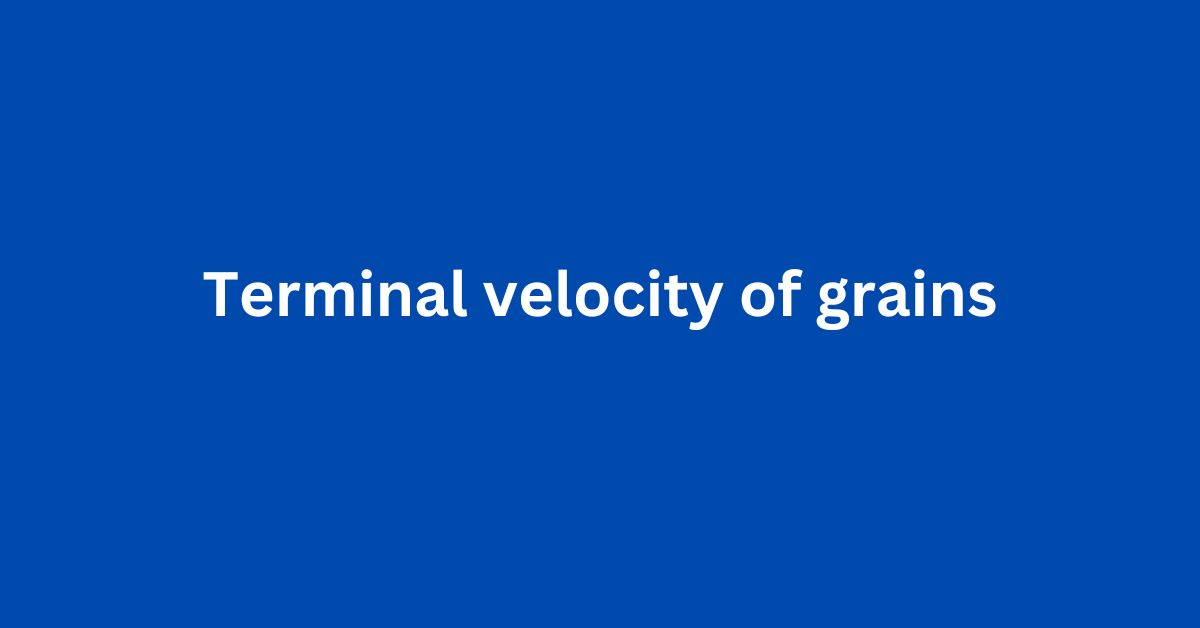Terminal velocity in grain processing
What is terminal velocity in grain processing?
Terminal velocity refers to the steady velocity a grain achieves when it falls through an air column under the influence of gravity. At this constant velocity, the downward gravitational force acting on the grain is exactly balanced by the upward drag force exerted by the fluid and any buoyant forces.
In other words, at terminal velocity, the force of gravity pulling the grain downward is balanced by the air resistance (drag) pushing upward. Hence, the grain stops accelerating and continues to fall steadily.
Terminal velocity is a fundamental concept used in post-harvest grain processing to separate, clean, and grade grains effectively. Based on the terminal velocity of grains and any mixed foreign particles (dust, straw, broken kernels, and foreign seeds) in grain mass, efficient air classifiers or aspiration systems can be designed.
Air separators use the principle of terminal velocity to separate grains from lighter impurities (e.g., dust, trash, or small particles) and heavier kernels. Grains with a higher terminal velocity (i.e., heavier, denser grains) fall more quickly, while lighter Impurities with a lower terminal velocity are carried away by the airflow. By adjusting the air velocity, the system can selectively separate grains of similar size and weight from foreign materials, improving the overall quality and cleanliness of the grains.
Factors affecting terminal velocity
The terminal velocity of a grain depends on:
- Grain properties: The size, shape, and density of the grain. (Larger or more aerodynamically shaped grains generally have higher terminal velocities. Denser grains generally have a higher terminal velocity).
- Fluid Properties: The density and viscosity of the fluid also influence terminal velocity.
Importance of Terminal Velocity in Grain Processing
- In grain separation, terminal velocity is critical in designing systems (like air classifiers, aspiration channels, air screen cleaners, winnowers, cyclones) where lighter particles (e.g., husks or chaff) are separated from heavier ones (e.g., seeds or grains) based on differences in their terminal velocities.
- This concept is important in grain processing, particularly in processes like cleaning, separating, and sorting grains, where particles of different sizes, shapes, and densities need to be separated.
What are some other factors affecting terminal velocity of grains?
- Variety of grains can significantly affect their terminal velocity. Different varieties of any grain shows variation in their size, shape, density and surface texture and so terminal velocity may be different for different varieties.
- Moisture content affect terminal velocity of grains. Wet grains are denser and heavier, which can increase their terminal velocity.
Terminal velocity values for some grains are given here. Note that these values are taken from available literature and these can changes according to moisture content present in seeds and variety of grains.
| Grain | Terminal velocity (m/s) |
| Wheat | 5.2-7 |
| Paddy (Unhusked rice) | 6-8 |
| Rice | 4.5-5.5 |
| Puffed rice (low density and is full of air pockets) | 2-4 |
| Sorghum | 6-9 |
| Maize | 7.8-10 |




